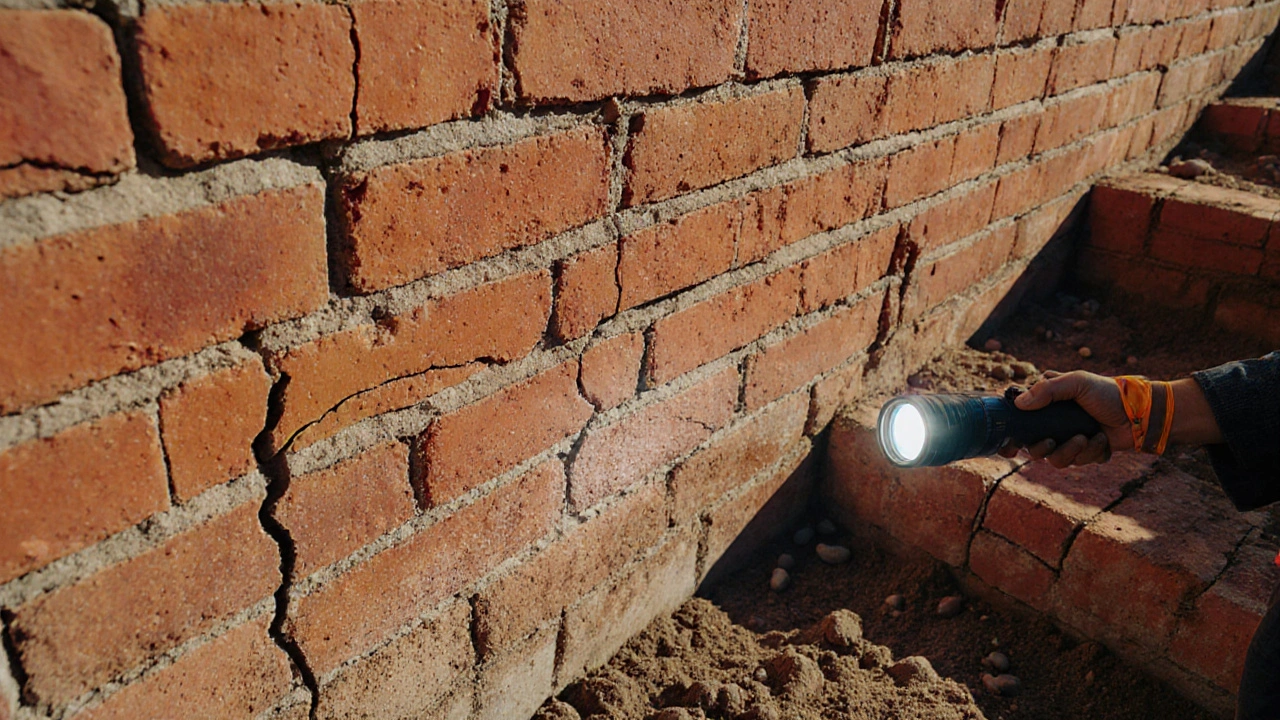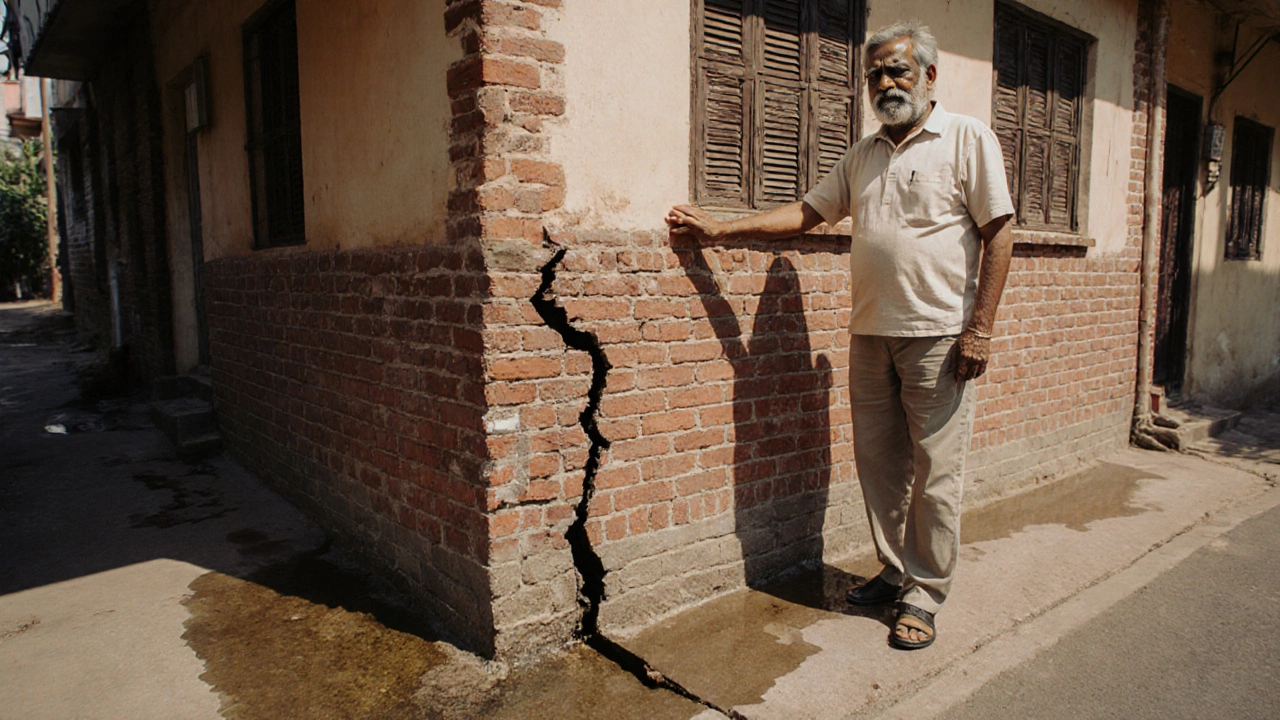Foundation Crack Assessment Tool
Assess potential foundation crack severity based on observed characteristics.
Crack Characteristics
Bad foundation crack is a structural fissure in a building’s foundation that signals excessive movement, moisture problems, or soil pressure. When left unchecked, it can compromise load‑bearing walls, shift doors, and cause expensive water damage.
Quick Summary
- Bad foundation cracks are usually wide, jagged, or growing quickly.
- Horizontal, vertical, diagonal, and settlement cracks each tell a different story.
- Moisture intrusion and soil movement are top culprits.
- If cracks exceed ¼inch or appear in multiple locations, call a professional.
- Common fixes include epoxy injection, carbon fiber reinforcement, and underpinning.
What Makes a Crack “Bad”?
Not every line in a concrete slab is a red flag. A bad foundation crack typically has three tell‑tale traits: width, pattern, and progression. Width over ¼inch, irregular or stair‑step edges, and any visible widening over weeks are warning signs. These traits often indicate that the underlying forces-like soil movement or moisture intrusion-are actively stressing the footing.
Common Types of Foundation Cracks
| Crack Type | Typical Width | Likely Cause | Repair Hint |
|---|---|---|---|
| Horizontal crack | 0.2-0.5in | Excessive lateral pressure from expanding clay soils | Carbon fiber straps or wall anchors |
| Vertical crack | 0.1-0.3in | Settlement or shrinkage of the slab | Epoxy injection, piering if severe |
| Diagonal crack | 0.1-0.4in | Uneven settling or heaving | Underpinning or slab jacking |
| Settlement crack | Varies, often wider at the base | Unequal compression of soil layers | Soil stabilization, pier extension |
How to Spot a Bad Crack in the Field
- Inspect the crack with a flashlight; note any jagged edges or stair‑step patterns.
- Measure the width using a ruler or a crack‑gauge; anything above ¼inch deserves attention.
- Mark the ends of the crack with chalk. Re‑measure after a week or after heavy rain.
- Check nearby walls, doors, and windows for misalignment; shifting frames often accompany bad cracks.
- Look for signs of moisture-efflorescence, damp spots, or mold-around the crack.
While you’re walking the perimeter, keep an eye out for related entities like expansion joint failure or wall bowing. Both can magnify the stress on the foundation and turn a minor hairline split into a structural nightmare.
Root Causes: Soil, Water, and Load
The three big drivers behind a bad foundation crack are soil movement, moisture intrusion, and excessive structural load. Expansive clays swell when wet and shrink when dry, pushing laterally against footings. Poor drainage leaves water pooling around the foundation, increasing hydrostatic pressure and eroding soil bearing capacity. Finally, renovations that add heavy equipment or change floor plans can overload a slab that was never designed for the extra weight.

When to Call a Professional
Homeowners can monitor minor cracks, but certain red flags demand a licensed foundation repair contractor:
- Crack width >¼inch or widening rapidly.
- Multiple cracks forming a “grid” pattern across the slab.
- Visible movement in doors, windows, or staircases.
- Water pooling consistently near the base of the wall.
- Signs of “pounding” noises during temperature changes.
Qualified contractors will perform a structural assessment, often using laser levels, moisture meters, and soil‑bearing tests. They may recommend underpinning (pier installation) for severe settlement, or a less‑invasive epoxy injection for isolated vertical cracks.
Repair Options Overview
There isn’t a one‑size‑fits‑all fix. The right method depends on crack type, cause, and the homeowner’s budget.
- Epoxy injection - best for vertical or hairline cracks; restores tensile strength.
- Carbon fiber reinforcement - applied to walls with horizontal cracks; adds shear capacity.
- Helical piers or push piers - address settlement by transferring load to stable soil layers.
- Slab jacking (mudjacking) - lifts sunken sections using a cementitious grout.
- Soil stabilization - chemical injection or compaction to prevent future movement.
Each approach has trade‑offs. Epoxy is quick but limited to cracks under ½inch. Underpinning is costly but offers a permanent solution for severe settlement. A professional will often combine methods to meet code requirements and ensure long‑term performance.
Related Concepts and How They Interact
Understanding a bad foundation crack often leads you to explore other entities that share the same failure mechanisms.
- Wall bowing - indicates lateral pressure exceeding wall capacity, commonly linked to horizontal cracks.
- Efflorescence - mineral deposits that flag moisture penetration around cracks.
- Crawlspace ventilation - poor airflow can trap moisture, worsening soil movement.
- Building code requirements - many jurisdictions mandate crack monitoring and repair thresholds.
- Load‑bearing wall assessment - ensures that any repair won’t compromise structural integrity.
Preventive Measures to Keep Cracks at Bay
Stopping a problem before it starts saves money and headaches. Here are five proven practices:
- Maintain proper grading away from the house (at least a 5% slope) to direct water runoff.
- Install and keep gutters and downspouts clear; consider extensions that discharge at least 6feet from the foundation.
- Monitor soil moisture with a simple probe during droughts and after heavy rain; irrigate landscaping evenly.
- Seal all expansion joints and perimeter walls with a high‑quality, flexible sealant to allow movement without cracking.
- Schedule a professional foundation inspection every 5-7years for older homes, especially those on expansive clay.
Case Study: From Minor Hairline to Major Structural Issue
John, a homeowner in Dallas, noticed a thin hairline crack running diagonally across his basement slab. He brushed it off as normal shrinkage. Six months later, after a wet spring, the crack widened to ⅓inch, doors began sticking, and a musty smell appeared near the foundation wall. A licensed foundation repair contractor identified underlying soil movement caused by poor drainage. The solution combined a French drain, epoxy injection for the crack, and two helical piers to stabilize the footing. Within a year, the house was back to normal, and the repair added roughly 10% to the property’s resale value.
Key Takeaways
- A bad foundation crack is wide, irregular, and tends to get bigger.
- Identify the crack type (horizontal, vertical, diagonal, settlement) to pinpoint the cause.
- Moisture and soil movement are the chief culprits; manage water aggressively.
- When in doubt, bring in a qualified foundation repair professional.
- Prevention-proper grading, drainage, and periodic inspections-keeps your home safe and stable.

Frequently Asked Questions
What width defines a dangerous foundation crack?
Any crack wider than ¼inch (about 6mm) or one that widens over a short period should be considered dangerous. Even smaller cracks can be serious if they appear in multiple locations or are accompanied by water damage.
Do horizontal cracks always mean soil pressure?
Usually, yes. Horizontal cracks often form when expansive clay soils push laterally against the foundation wall. However, they can also result from poor construction practices or nearby excavation.
Can I fix a bad foundation crack myself?
Minor hairline cracks can be sealed with epoxy kits, but true bad cracks-those that are wide, moving, or caused by structural issues-require professional assessment. DIY repairs often fail to address the underlying cause.
How long does underpinning take?
The timeline varies by house size and soil conditions, but a typical underpinning project-installing helical piers and adjusting them-takes 3 to 7 days for the work, plus a few days for post‑install monitoring.
Is water damage always linked to cracks?
Not always, but water often finds its way through cracks, especially around expansion joints or where sealants have failed. Persistent damp spots near a crack are a strong indicator of moisture intrusion.

Written by Fletcher Abernathy
View all posts by: Fletcher Abernathy